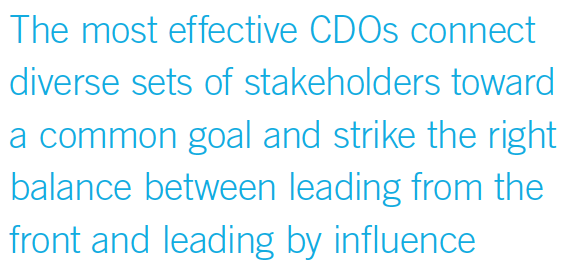Hiring a Chief Diversity Officer
Pharmaceutical Executive
Nine ways pharma companies can maximize a CDO’s potential value and impact on driving innovation as a business mandate.
Nine ways pharmas can position their CDOs for success in driving innovation
Hiring a chief diversity officer (CDO) is one of the most visible ways a company can communicate its commitment to a diverse and inclusive workplace. By that measure, the pharmaceutical industry is doing well. Of the 25 largest publicly-traded pharma companies in the US and Europe, 80% have CDOs (or equivalent roles), compared to 47% of S&P 500 companies, according to an analysis by Russell Reynolds Associates. In addition to CDOs being prevalent in the pharma industry, they are also more experienced. Forty-five percent of the pharma CDOs have held CDO positions previously, compared to only 26% of those in S&P 500 companies.
Investing in diversity and inclusion (D&I) makes sense for drug manufacturers. A growing body of research supports the notion that the combination of inclusive leadership and diverse teams produce higher levels of innovation. According to our 2018 D&I Pulse survey of over 1,800 global executives, more than 80% say working for leaders who are highly committed to D&I brings out their most innovative ideas. Johnson & Johnson is a highly visible example of a company linking D&I with innovation in its corporate strategy. The $81.6 billion pharma giant publishes a detailed D&I strategy on its website, which includes the explicit missions to “advance our culture of innovation and inclusion” and “enhance business results and reputation.”
Innovation is the fuel for growth. To bring new therapies to market, forward-looking organizations are effectively incorporating and implementing fresh approaches such as artificial intelligence (AI), machine learning capabilities, or advanced manufacturing and supply chain logistics to gain a competitive advantage. Being on the leading edge of innovation hinges on assembling the strongest and best minds around the table. This may include breaking the mold and bringing in diverse talent from outside the industry, a practice that remains uncommon in what can be an insular field. Pharma companies spend billions each year on R&D, and the return on that investment is directly affected by how successfully leaders maximize the full potential of a diverse set of talent.
Beyond appointing a CDO, drugmakers need to be intentional and mindful about how best to maximize a CDO’s potential value and impact on innovation. Our 2018 D&I Pulse study found that only 42% of the pharma/biotech executives surveyed see their organizations emphasizing D&I as part of business strategy and that only slightly over half (59%) of them feel their organizations bring out their most innovative ideas. Our conclusion is that there is an opportunity to reinforce and bolster the CDO’s effort in driving D&I as a strategic priority and an innovation mandate.
First, the organization must acknowledge how and why D&I propels innovative thinking. Secondly, the company must establish the direct link between D&I and innovation strategy. Lastly, the leadership team must embed D&I in everything it does and embrace the CDO as a business partner and agent for change.
More specifically, here are nine ways organizations can set their CDOs up for success:
Before hiring a CDO
Align the D&I mandate with the innovation mandate
Crystallize a clear linkage between D&I investments and innovation goals. Quantify this link by creating innovation metrics that become part of the CDO’s mandate to hold the organization accountable. Innovation is a continuous journey. Make an enduring commitment to identify new opportunities for changes that the CDO can implement to bolster innovation goals.
Get leadership buy-in
Ensure the executive leadership team stands behind the importance of the CDO role and its responsibilities as a business partner in driving better business outcomes, including innovation targets. Align and rally behind the commitment to D&I as an amplification for innovation. Operating with anything less than a full leadership commitment to D&I, a CDO faces a lonely and uphill climb on the organization’s D&I journey.
Assess readiness for change
Making progress with D&I requires moving away from established norms and entrenched ways of doing business. This challenge is particularly acute in the pharma industry, where past successes and failures often define the framework for future initiatives. By definition, innovation is about entering uncharted territories. In preparing for a CDO to catalyze change, make an honest assessment of which parts of the organization will be most receptive or resistant to change. With early adopters, build a proof of concept and socialize success stories to gain momentum for enterprise-level adoption.
When hiring a CDO
Consider the full range of CDO profiles and experiences
CDOs can come from a variety of career paths. Currently, about half of pharma CDOs spent significant time in HR before taking the role, 40% were in D&I-specific roles, 25% held a marketing or communications role, and 15% came from a business leadership role unrelated to D&I. The “right” profile for an organization depends on the specific needs of the business.
Prioritize executive influence skills
The pharma industry is largely populated by leaders with highly technical training that reinforces structured and disciplined ways of processing information and decision-making. The best CDOs are challengers and boundary-spanners. Their role is to prime the organization to embrace new ways of doing business. Strong executive influencing skills are foundational for the CDO to be a successful business partner to the executive leaders. The most effective CDOs connect diverse sets of stakeholders toward a common goal and strike the

right balance between leading from the front and leading by influence.
Be balanced
Nearly every organization starts off requiring a seasoned CDO with industry expertise and experience. Be balanced. Consider the importance of industry-specific knowledge, track record, as well as the candidate’s potential and trajectory as a match to your company’s culture and needs. Our data shows that 25% of current pharma CDOs spent significant time outside the industry before taking their current role. Cross-pollinating experiences and perspectives from other industries may fuel the generation of new and orthogonal ideas.
After hiring a CDO
Accelerate the CDO’s learning curve
There is no “one-size-fits-all” D&I solution. To be effective, the CDO must have a deep understanding of the organization’s history and future needs. Help build the CDO’s exposure to the company’s unique innovation culture and process, along with enablers or hindrances.
Arm the CDO with data and metrics
Ensure the CDO has access to the workforce demographic and employee sentiment data as well as the innovation outcomes metrics that define success. Help the CDO define processes and metrics that create accountability around D&I.
Empower the CDO
Starting with the CEO and the executive leadership team, commit to D&I as an essential driver of innovation and business success. Empower and encourage the entire organization to participate and contribute. Recognize that CDOs are typically purpose-driven individuals and that retaining them means ensuring they are in a position to hold the entire company accountable for making progress with D&I and create meaningful change. Systemic change will happen with consistent and heartfelt acknowledgment throughout the organization.
Setting the pace
The pharma industry is at the forefront of appointing chief diversity officers and committing to D&I as a strategic priority for the business. Defining and empowering the CDO’s role in driving innovation as a business mandate is paramount to bringing transformative results. We are optimistic that the pharma industry will stay on the leading edge of cultivating a diverse and inclusive workplace, so that the best and the brightest minds can carry out the industry’s mission of bringing breakthrough therapies to patients.
Sean Dineen is a senior member of Russell Reynolds Associates’ Leadership & Succession team. Cissy Young leads Russell Reynolds Associates’ Diversity & Inclusion practice and is a senior member of its global Biotech & Pharmaceuticals practice. Both are based in Boston.
